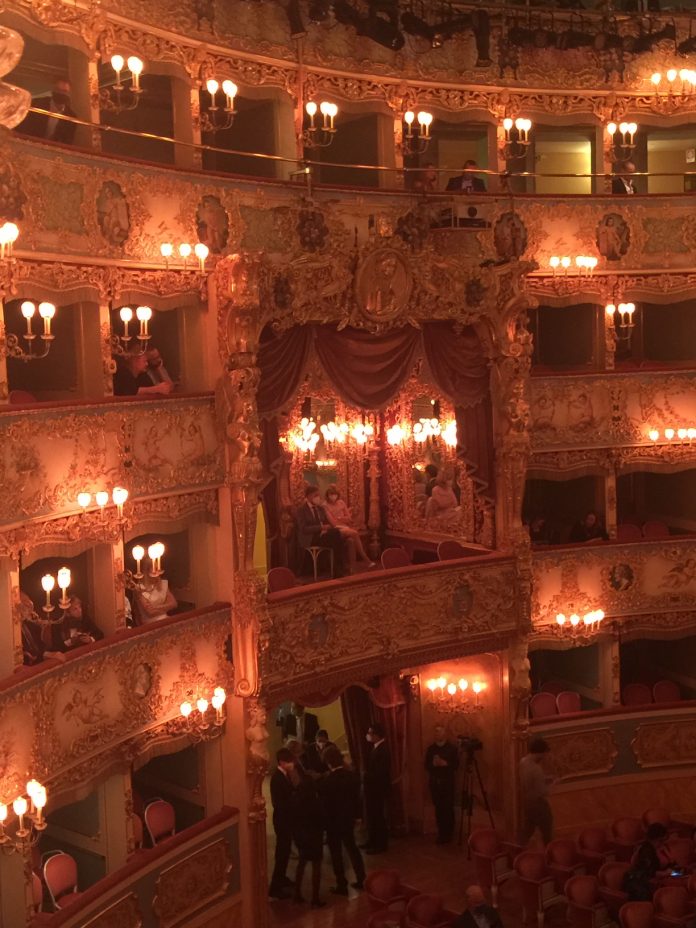by Alessandra Ressa
Going to the opera in times of Covid was an emotional experience, and not just because of the passionate, tragic love story between Violetta and Alfredo in La Traviata. This strange time of uncertainty, when we still seem far from seeing the light at the end of the Covid tunnel, has forced me to ponder many things. For example, I realized I’d taken too many things for granted, such as: the pleasure of sitting on a soft, velvet armchair listening to a symphony; or to those tenor-soprano duets that always made me cry.
So, when I walked into the beautiful La Fenice theatre in Venice last Friday, to see Verdi’s La Traviata masterpiece, my first opera after lockdown, I couldn’t hold back my tears even before reaching the main entrance doors.

I cried because I thought it a great privilege to be there, even despite the litres of hand-sanitizer and automated temperature thermometers mandated for use around every corner. I cried because I felt it was a miracle for La Fenice, as well as all Italian opera theatres that have lately resumed activities, to be able to offer quality performances. Especially considering the heavy financial losses they have suffered over the past seven months.
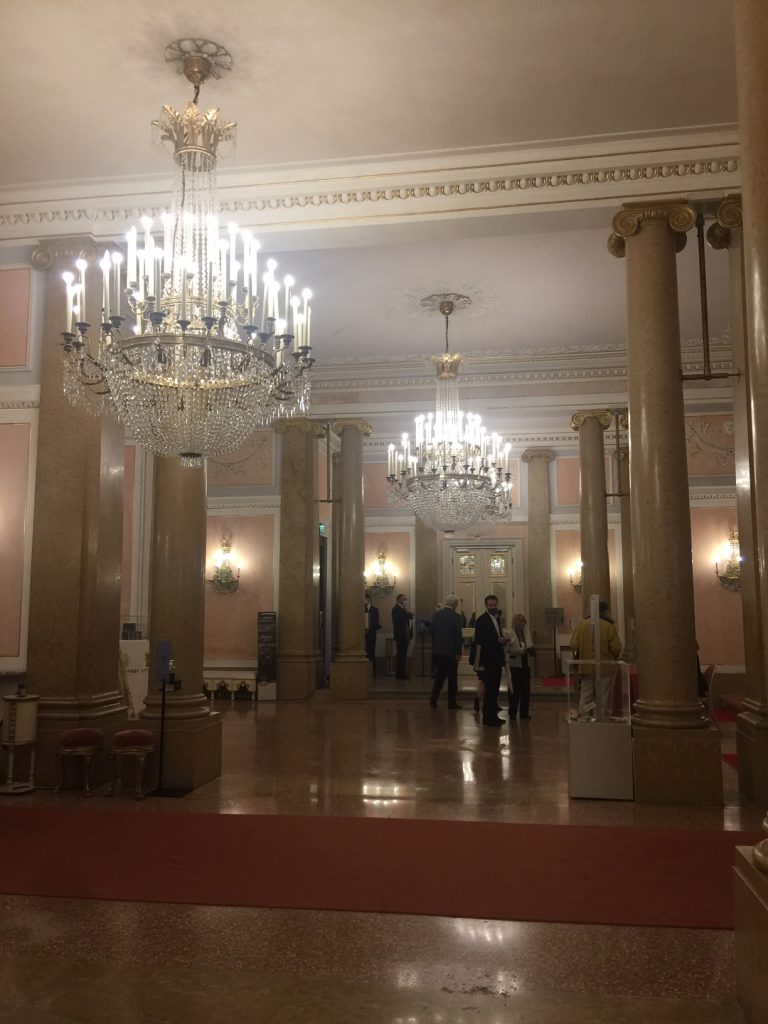
La Traviata has a special meaning for La Fenice. It was performed here for the first time in 1853. Although today it is probably the most beloved opera around the world, at its debut in Venice, it was heavily criticized. This happened quite often at the time with new operas which later became great successes.

Since then, it has been performed regularly at La Fenice. So much so as to become one of the most familiar events of the year for its Venetian and international public. One hundred years after the first unfortunate performance, in 1953, soprano Maria Callas interpreted Violetta in an unforgettable Traviata at La Fenice. A permanent exposition of photographs of Callas in Venice fills the public with nostalgia along the halls of the theatre today.
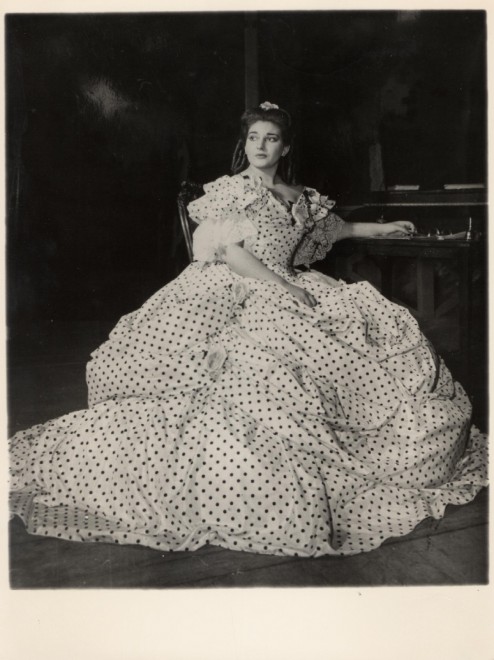
Almost 20 years ago, it was once again Verdi’s La Traviata that celebrated the theatre’s new grand opening after the devastating fire of 1996 that completely destroyed it. A court ruled out arson, although two culprits were condemned for the cultural catastrophe, which disconcerted theatre lovers all over the world.
Like the phoenix, the mythological bird that obtains new life by arising from the ashes, this Venetian architectural jewel was rebuilt in seven years. The interiors, originally richly decorated with stuccos and gildings of the finest quality, created in different eras and by different artists, have been restored thanks to the intervention of excellent craftsmen. They have been able to reproduce almost completely the ancient decorations and lost furnishings.

Yet, the 1996 fire was not the first one. La Fenice went up in flames in 1836 because of a damaged heater. The fire completely destroyed the original theatre, built in 1792. Thanks to its popularity and importance, it was rebuilt in no time. Of course, you can’t simply duplicate 200 years of history, and today you do have the feeling, once you enter the beautiful, elegant theatre, that it is simply too shiny, too golden, too perfect.
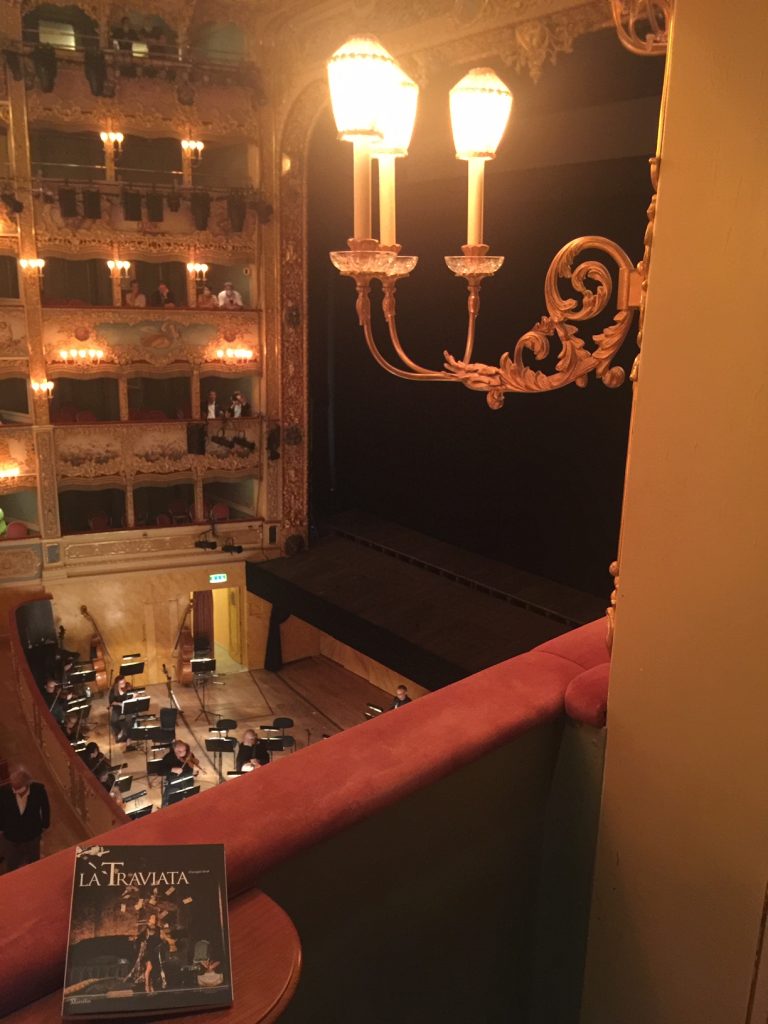
It made perfect sense to perform the much loved La Traviata after Covid19 lockdown. And, with limited seating restrictions, the two scheduled weekend performances were quickly sold out. It wasn’t only less people in the audience to remind of the strange times we are living. The performance itself was presented in a modified, “Covid version”, with reduced scenes and only a limited number of singers allowed on stage at any time.
Violetta Valery (Claudia Pavone), sick with tuberculosis, lies on her death bed in a Paris hospital, surrounded by people wearing masks. How ominously current! Tuberculosis then, Covid today! Had it not been for the old fashioned impediments of love it could have been a story written today. The heartache of Alfredo (Matteo Lippi) became even more painful when he couldn’t hold his dying lover in his arms due to Covid restrictions!
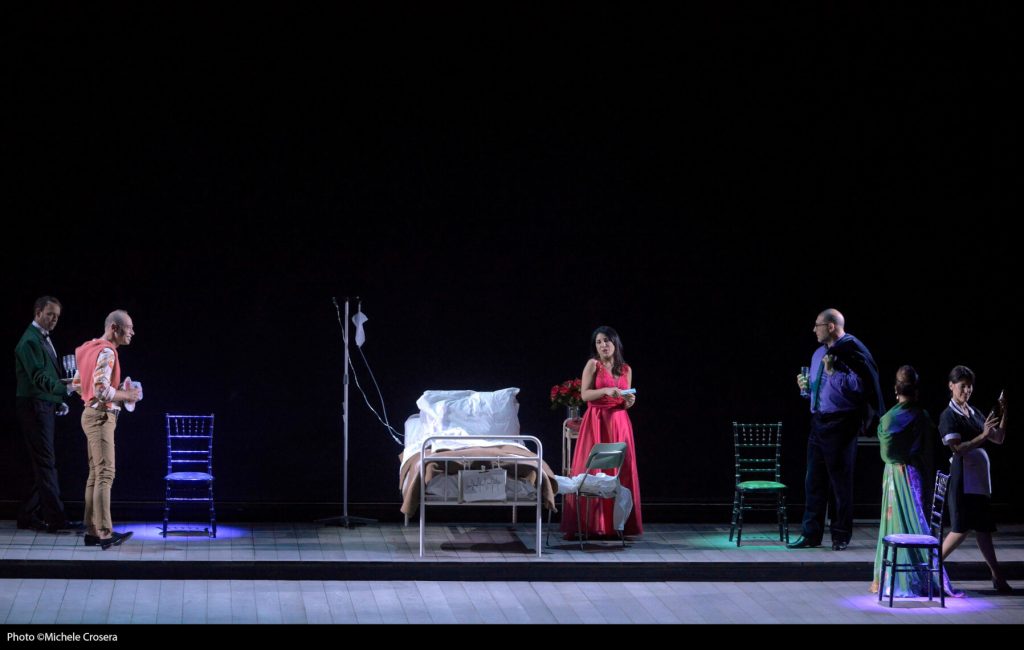
Scenes were limited to a few scattered chairs; costumes were plain (except for Violetta, invariably wearing red at parties); there were no excesses; no traditional big gatherings, rendered by choirs; and no overflowing champagne for the popular initial toast (Libiamo ne’ lieti calici, let’s drink from the joyous chalices ).
The choir sang behind the scenes at an appropriate distance, to be seen only once in an accusatory and quite effective formation. Director Christophe Gayral chose, on purpose, a sober cut for the performance. Incredibly, he was able to make social distancing an artistic resource, if a bit non-traditional.
At the end of the last act, Violetta does not collapse lifeless onto the floor, but leaves the scene in a ghostly manner, while Alfredo is left on stage dealing with his sorrow. I found this unexpected turn an original way to solve the difficult on-stage dilemma of social distancing between the lovers in the last scene.
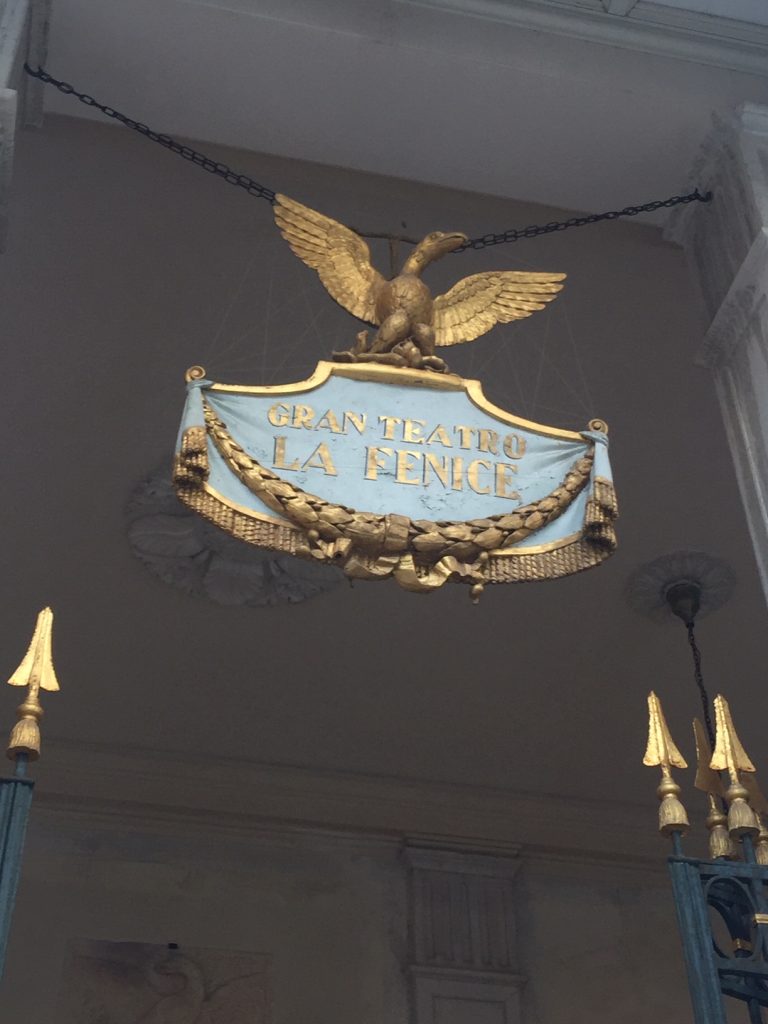
Although by the time you read this review it may be too late to buy tickets and rush to Venice for La Traviata, do not despair, as the popular opera will be performed at the Verdi theatre in Trieste this December — different production, different performers, but not much else is known at the moment.
However, it’s a unique experience to enjoy a show at La Fenice. The theatre has a rich programme for the weeks to come, concerts and operas for every pocket and taste (tickets for major operas range from €60 to €200, minor operas are usually half). Coming up next week is Verdi’s Trovatore; and Rossini’s beloved Barber of Seville is on in October.
Even if you can’t fit a performance in your Venetian schedule, you should nevertheless book a tour of the theatre. Located near Piazza San Marco, it is one of the biggest, and most richly decorated opera theatres in Italy. The royal box is quite a sight with its overflowing thick golden decoration and detail.

It was actually Napoleon who demanded the royal box for institutional purposes. During the French domination of Italy, La Fenice had to undergo some changes in order to function as a state theatre. Entire central boxes were gutted to make room for the single, large royal box. Thus, in 1807, a makeshift imperial loggia was built to welcome Napoleon. Today, like yesterday, the theatre is the place to be for celebrities and famous couples. In November 1859, Emperor of Austria, Franz Josef and his consort Sissi, attended the La Fenice Theatre. It was also where King Vittorio Emanuele III and Elena of Montenegro met for the first time.

























